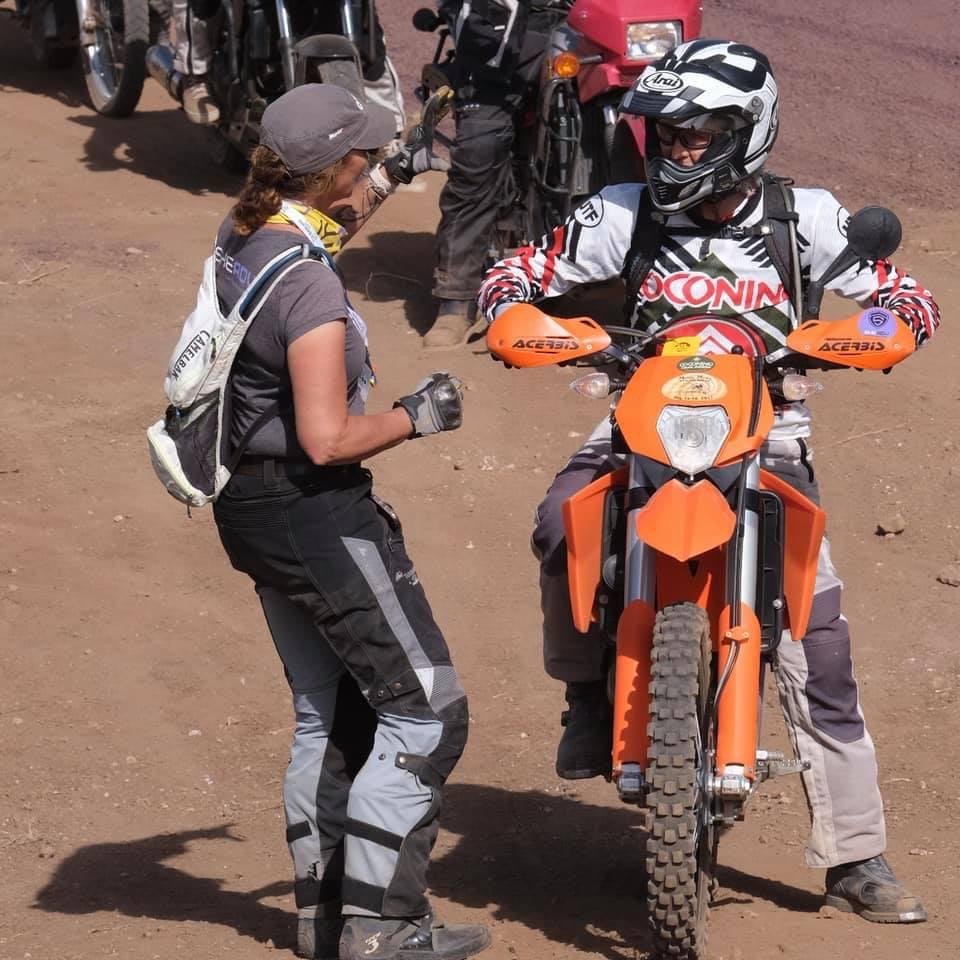Recommended Dual Sport Riding Gear
If you ever question things (for example, the protection level of gear) you probably should address it sooner than later. Learning the hard way is never fun. Feel free to reach out in advance if you have any questions.
1. DOT approved helmet - a dual sport helmet is recommended, as the bill provides the ability to block the sun while riding. The sun can be a hazard. It’s also recommended to have the option of dirt bike googles, which will provide more air flow and be cooler, while still protecting your eyes and keeping the dust out. Modular helmets are discouraged as they are much heavier, especially when the chin bar is in the up position. If you wear a modular helmet, be sure to put it down in the locked position while riding. This will limit the amount of neck strain in the C5 and C6 area of your neck, which could lead to numbness in the right arm and hand. You can have a low speed to no speed fall and if the modular helmet is in the up position, you can injury your neck more than if the helmet was down. Also, by having the modular helmet up, it is no longer a DOT approved helmet.
2. Adventure riding suits offer the best protection for both on and off street. They are designed with both the upper and lower body protection for the abrasive pavement and also has armor in all of the high strike areas; such as shoulders, elbows, back, hips, tail bone, knees. Please know that dirt bike gear isn’t meant for high speed crashes on pavement. I’m seeing a fair share of riders wearing dirt bike pads under jersey type shirts and dirt bike pants, which is great for closed circuit training, but not so great for the higher speeds on pavement. In the event of a higher speed crash on pavement, the dirt bike gear will only help with the initial impact. After impact, the pads tend to roll out of place because of the increase traction of the pavement, have a good chance of melting under the friction of the pavement and the jersey and pants worn will not offer any protection at all! Bottom line: Closed circuit training, dirt bike riding gear is great! Riding routes like BDRs where you are both on and off the street, you really should consider an adventure suit such as the Touratech Companero suit like mine or BMW, Rev’It, and Klim also have several options. Yes, they can be expensive, but what is your skin and body parts worth? Invest in a good dual sport riding suit! Mine has lasted many years and thousands of miles, not to mention, has protected me in the small get offs as well as the high speed crash I had on the track!
One additional note: Your suit should fit snuggly (not too tight, but snug) and shouldn’t be big and loose! Over sized suits will not protect you, as they are meant to, in the event of a crash. The materials and pads will slide out of place and therefore, not protect you as well.
3. Sport specific motorcycle gloves. Consider a lighter weight off-road glove for off-road AND a more street worthy glove for when you’re on the pavement. Off-road gloves may not hold up in the event of a crash on pavement and dirt bike gloves will definitely NOT protect you at all! They will shred in a nanoecond. A full leather motorcycle glove will offer a high level of protection and one that has a velcro scrap to secure on your hand is highly recommended.
4. Sport specific motorcycle boots - Motocross boots are highly recommended as they offer the highest level of protection. A very common injury for off street riding is a broken fibula! There is the potential of going down, know that adventure boots aren't the highest level of protection possible. Motocross boots take some time to get used to, so if you’re going to get them, get them early on and practice with them as there is a learning curve to them. You WILL get used to them!
A good riding suit should have 4 qualities:
1) Keep you dry and comfortable
2) Protection from impact and abrasions that is meant to withstand friction in the event
of a slide on pavement. Not all motorcycle gear will withstand friction and will melt into
your skin
3) Have lots of ventilation for when the riding gets tough or you’re in warm temperatures
4) Zip together for added protection and warmth in cooler temperatures



